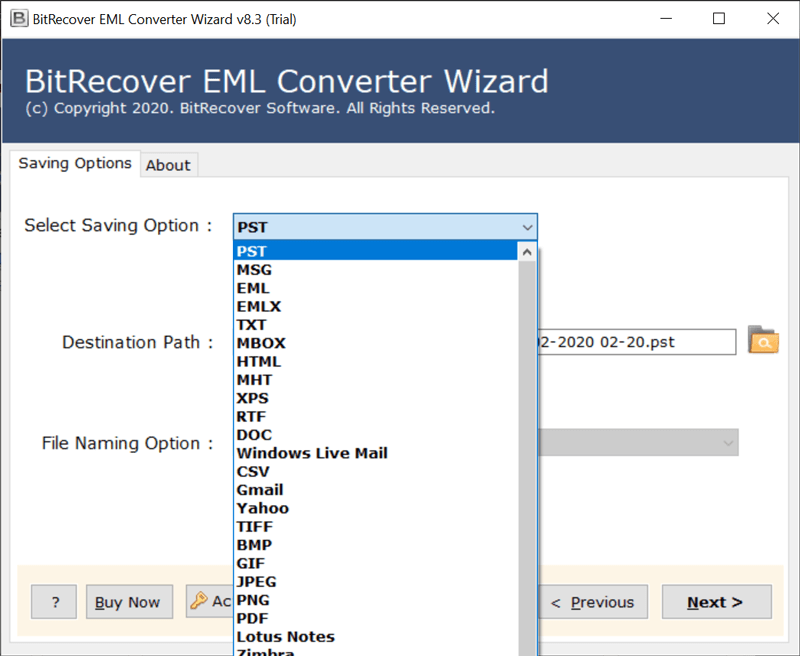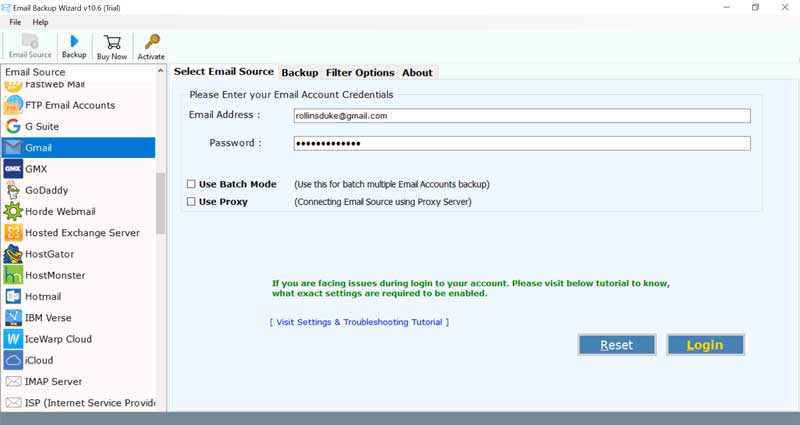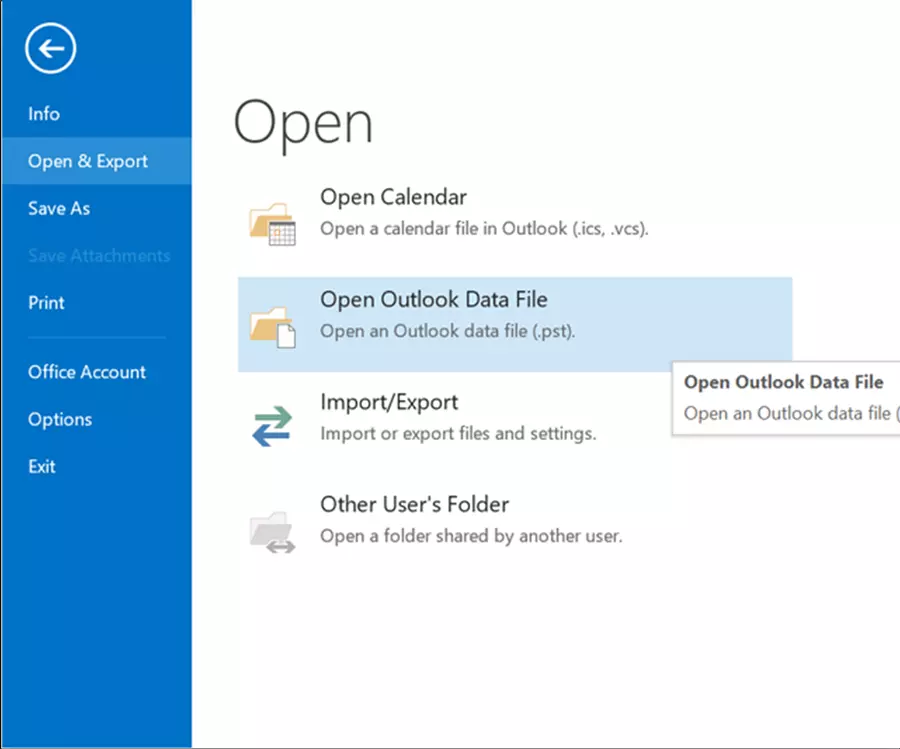How to Move Old Emails to PST file for Microsoft Outlook ?

User’s Query
I am an employer here my all employees are using different email clients and services. I have a lot of old archived emails in multiple file extensions such as *.eml, *.msg, *.mbox, etc. Even here some employees are using multiple web-based email services such as Gmail, Yahoo Mail, Outlook.com, and many more. Now I am planning to move old emails to PST file. Because I have decided to use only Microsoft Outlook desktop client in company using my own hosted email accounts. Do you have a solution to combine my all old emails into PST file for Microsoft Outlook personal information manager program?
– Hernandez, Denver Technological Center, Colorado (USA)
One of our valuable client was recently connected with the BitRecover Support team and he has discussed his problem as mentioned above. Actually, he wants to get the professional technique to move old emails having *.eml, *.msg, *.mbox file extensions into PST (Personal Storage Table) file of Microsoft Outlook.
According to the demand of the user, we will mention only professional methods to move old emails to PST file. However, the manual methods are only for home-based users because business users don’t take any risk about their important email messages. Before explaining the methods to move old emails to PST format. Firsts lets discussed about old file extensions
What are old file extensions ?
Different email clients and servers use different file extensions to store email messages, contacts, calendars, notes, journals, to-do lists, briefcases, etc. In this digital world, there are a lot of email clients available that use different file extensions. Actually, email client’s data files are also known as old file extensions. Here understand one thing also we are talking about only email & email-related file extensions instead of others.
There are a lot of file extensions created with email clients and email servers such as PST, OST, MSG, EML, EMLX, EDB, MBOX, MBX, MBS, TGZ, ZDB, TNEF, OLM, Maildir, ICS, CSV, vCard, etc. But as per the user’s recommendation, we will discuss about only three major file formats (.eml, .msg, .mbox) to move old emails to PST file extension. Even here you will get the best solution to export old emails to PST from various web-based cloud services.
EML File – An email stored in *.eml file extension represents email messages. Several email clients / email services allow to store / export email messages in *.eml file extensions such as Windows Live Mail, Windows Mail, eM Client, Thunderbird, DreamMail, etc. In email clients an EML file stores only one email.
MSG File – Microsoft Outlook uses .msg file extension to store single messages, contacts, appointments, other information that is also known as Outlook message file. It also contains all email meta properties i.e. To, Cc, Bcc, From, Subject, Signature, Internet Header, etc.
MBOX Mailbox File – Most of desktop-based and cloud-based email clients / services uses .mbox file extension to store / export mailboxes into .mbox file extension such as Thunderbird, SeaMonkey, Google Takeout, Opera Mail, Eudora Mail, Horde Mail, Apple Mail, etc.
Read Also – How to Import Old Emails into Outlook?
Move old emails to new PST – Know-how ?
Here we are respectively providing you different solutions for solving “how to move old emails to PST file” related queries. After export old emails to PST file, you will need to import newly created PST file in Microsoft Outlook. But first of all, we are showing you the step-by-step process to move old emails having *.eml, *.msg, and *.mbox file extensions to PST file.
#1 Technique to move old emails to PST
If your old emails are stored in .eml file extension then just download EML Converter for Windows & Mac Computer separately. The tool has a separate option to convert EML to PST file as you can see in the respective screenshot. This toolkit offers multiple saving formats as per the demand of business users. So that users can easily combine all old emails into .pst file.
#2 Technique to convert old email to PST
MSG Converter is a highly recommended software for changing old emails having .msg file extension to .pst format. The tool comes with a separate option to convert MSG to PST Unicode character file that can be used with the latest MS Outlook editions. It is complete software for solving all issues regarding Outlook message (*.msg) files as it is offering more than 30+ saving formats.

#3 Technique to export old emails to PST
Download all-in-one MBOX Converter which can easily export old emails saved in *.mbox file extension into new PST file. Using this recommended toolkit, users can easily move old emails into multiple email clients, email servers, and commonly used file extensions. Even it is compatible with mailbox files of several email clients and supports all MBOX file variants.

Transfer old emails to PST file from all webmail services
Our clients can use also use Email Backup Software which can move old emails to new PST file from all web-based email services such as Gmail, Google Workspace, Yahoo Mail, Microsoft 365, Outlook.com, IMAP Server, and all. This software can easily change unlimited old emails from all web-based services to PST file.

Its time to import newly created PST file to Microsoft Outlook
After moving old emails from several file extensions and cloud email services to new PST file. You need to import newly created PST files into Microsoft Outlook. You can just follow these simple steps.
- First of all, run Microsoft Outlook personal information manager program.
- After that, choose the Open Outlook Data File option to import the newly created PST file.
Conclusion
After reading this dedicated blog post, anyone can easily move old emails to PST file. Then import newly created PST file to Microsoft Outlook 2019, 2016, 2013, 2010, etc. Using above mentioned methods all home and professional users can easily export old emails to new PST file. Its a 100% verified technique, tested by experts. These all suggested software come with free demo edition. The company provides 24 hours of technical support for solving user’s doubts.





